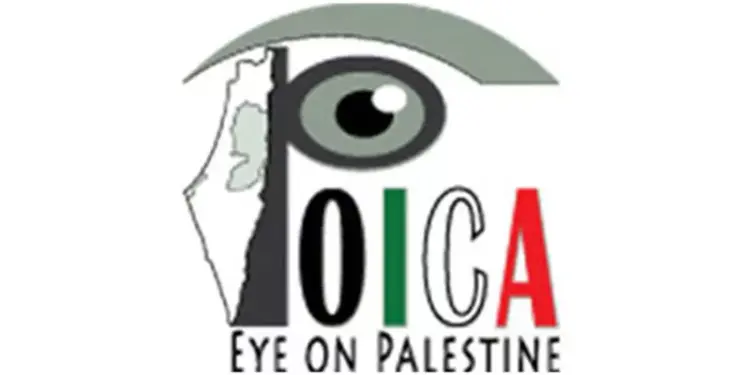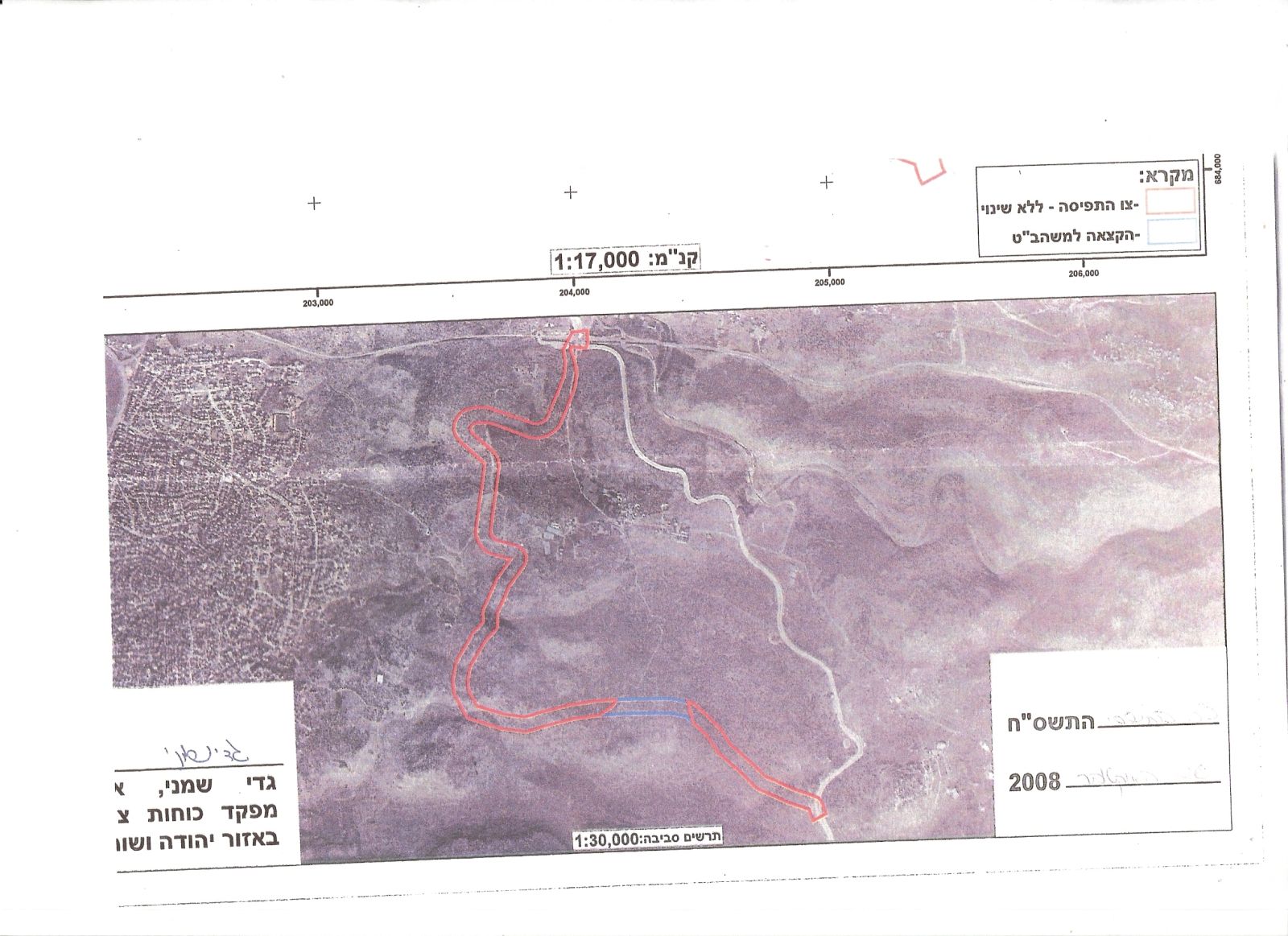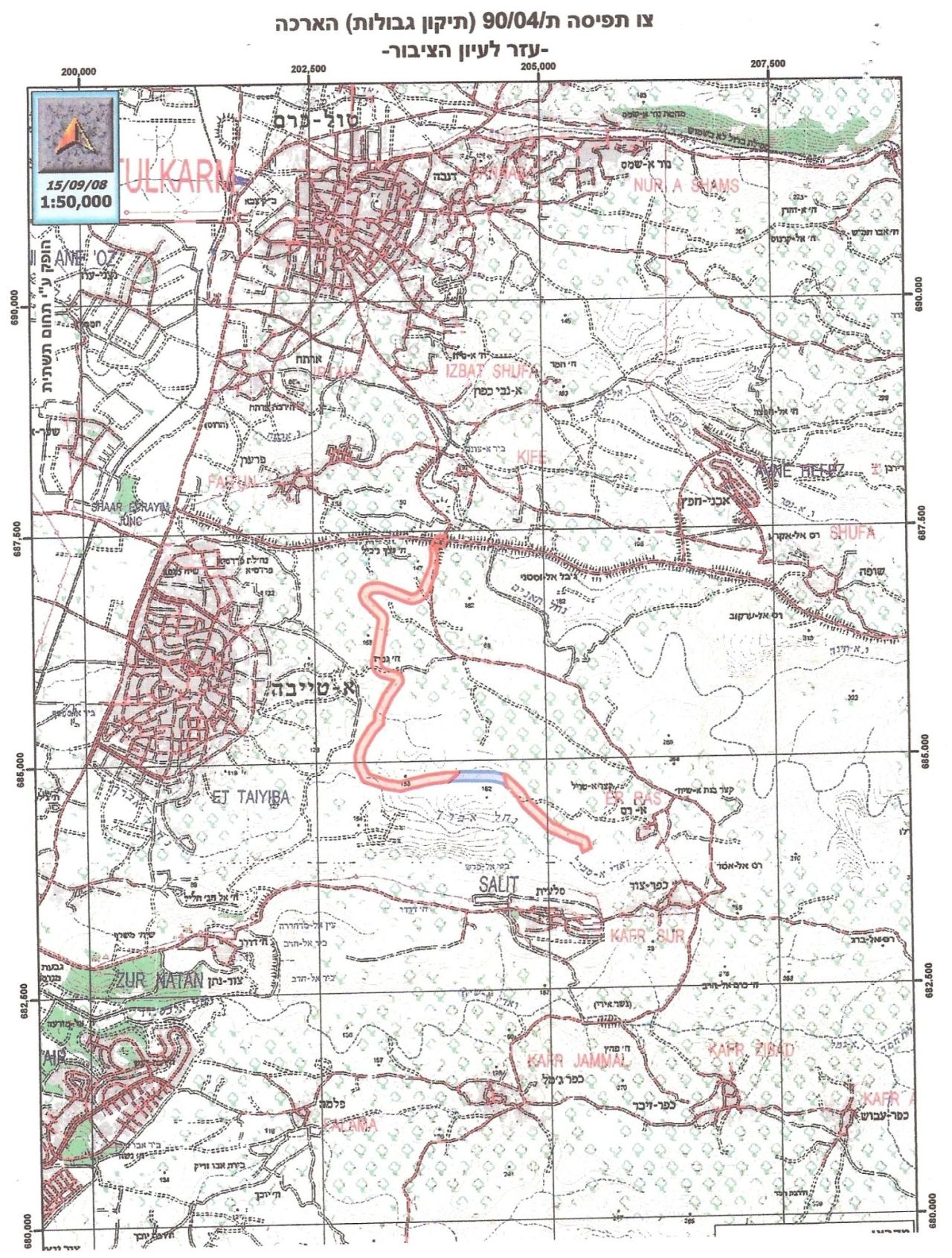On the 25th of November, 2008 the Israeli occupation army submitted a land confiscation order to the Khirbat Jabara village council in Tulkarem. The order called for the confiscation of 587 dunums and 700 meters for the purpose of establishing a section of the Israeli Racist Wall in the western and northwestern area of the Khirbet. The planned section would effectively isolate the village from the nearby city of Tayba located inside the Green Line.
The new order, holding number T/90/04, reroutes the Wall in parcels Tayba, Al Ras and Far’oun. It is, also, an extension of an earlier order issued in 2007 which called for the re-routing of the Wall. The previous order was issued by the Israeli High Court of Justice after the village of Jabara filed a petition with the Court to remove the Wall. At the time of the filing, the Racist Wall was surrounding the village from all directions which isolated it from its Palestinian heartland. The decision of the Court called for the Wall to be placed only at the western side of the village. In case the new re-routing takes place, hundreds of newly-planted trees will be uprooted.
The Location:
The village of Khirbet Jabara is located 6 kilometers south of the City of Tulkarem. Its population is about 350 of which 80% came originally from the nearby Al Ras village. The remaining 20% came originally from the village of Far’oun and the City of Tayba located inside the Green Line.
There are four main clans in the village; Jabara, Oudah, Awad and Abu Safiya. Before the year 2002 (before the construction of the Racist Wall) around 95% of its workforce used to depend on agriculture and raising chicken. According to Ministry of Agriculture data, the village had the largest number of chicken farms in Tulkarem with more than 78 chicken farms in which 1 million chic were raised. In addition, the village had around 100 dunums of Green Houses most of its products used to be marketed mainly inside the Green Line and other parts of the West Bank.
It is worth pointing out that 90% of the villages’ lands are registered in the Land Registry in Parcel 2 of the nearby Al Ras village. The remaining 10% are registered as part of the village of Far’oun. In accordance with this classification, the Israeli occupation authorities did not recognize the village for the longest time as an independent village. Up until June 2006 these authorities considered the village as an unrecognized community administered by Al Ras village.
Occupation-Caused Agony to the Village of Jabara:
The agony of the villagers in Jabara started in July 2002 when the Racist Wall surrounded the village from 3 directions; north, east and south which led to its total isolation from its West Bank heartland. The agony manifested itself in the following forms:
-
The destruction of more than 150 dunums atop which the Wall was built. The length of Wall that surrounds the village is about 3 kilometers with a width of 70-80 meters.
-
The construction of the Wall led to the isolation of 350 Palestinians behind it.
-
Marked difficulties in providing the basic services to the residents of the village; medical teams as well as civil society and humanitarian organizations need to have a prior coordination with occupation authorities as to allow them through the 2 Wall gates into the village. It is worth noting here that one of gates (Gate 22) has been closed since June 2006 until nowadays. As for the other gate (Gate 753) it used to operate 3 times a day for one hour each time; between 7:00 and 8:00 AM, between 1:00 and 2:00 PM and between 5:00 and 6:00 PM. As such, the students of the village used to face many difficulties as they were forced to attend Al Ras School due to lack of schools in the village. The need to go back and forth between their village and the school forced the students to wait for long hours under harsh weather conditions for the occupation soldiers to open the gate for them. The situation was unbearable to the degree that the International Committee for the Red Cross (ICRC) placed a tent near the iron gate so that the students can protect themselves from the severe weather conditions the area is known for. When Gate 22 was totally shutdown, Gate 753 was opened 24 hours a day but only for villagers holding IDs with Jabara as a residence place.
-
The agricultural sector was the hardest hit as the Wall caused the total collapse of the chicken farming industry in the village. Hard hit was also the Green Houses industry due to the inability to market the products in neither the Israeli nor West Bank markets. As such, the unemployment rate has drastically increased in the village during the years of the Intifada.
Prepared by:
The Land Research Center
LRC


















